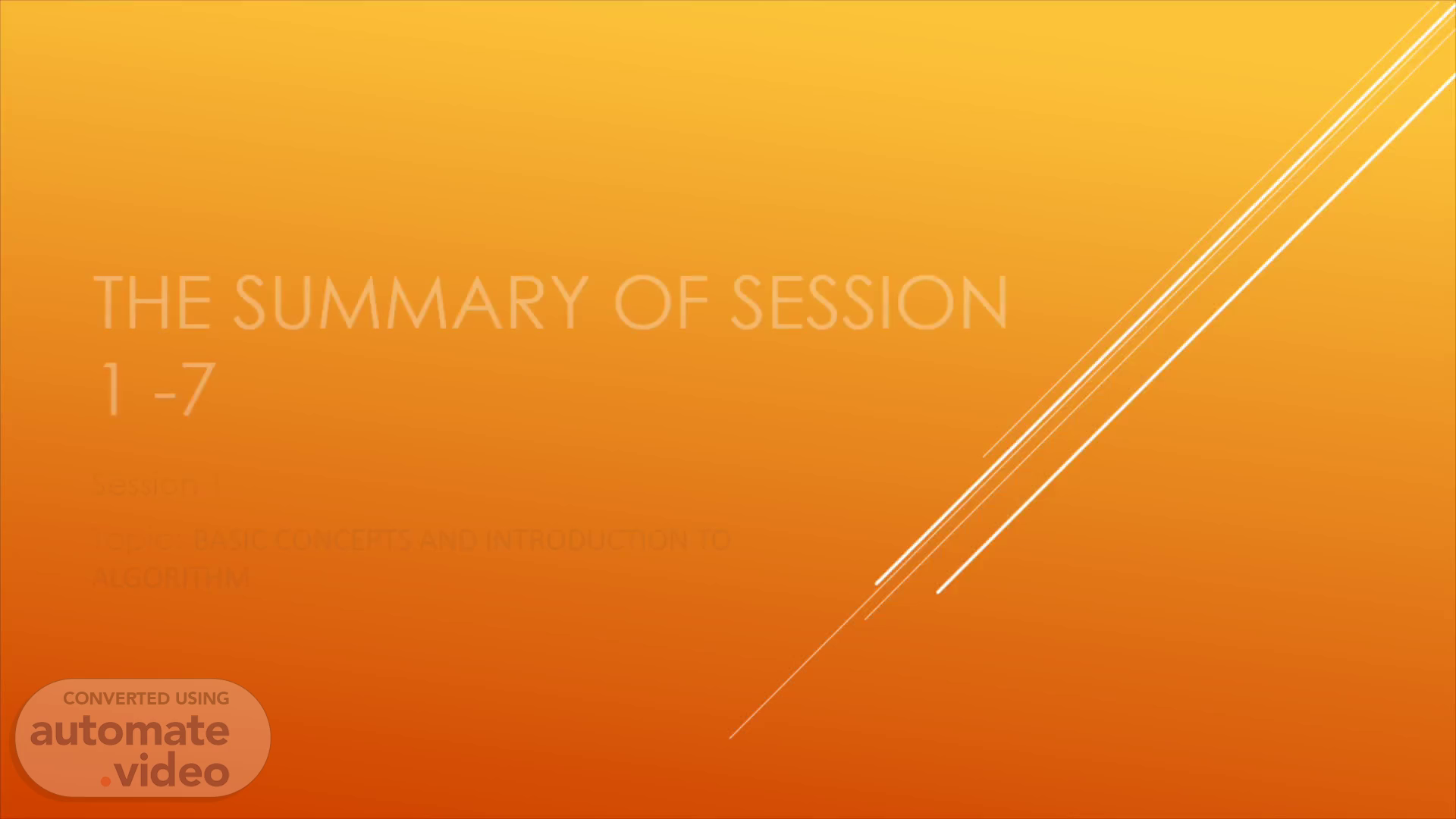
Page 1 (0s)
[Audio] Good morning, everyone! Today we will be discussing basic concepts and introducing algorithms. We will explore the principles of efficient problem solving and how data structures such as stacks help us to understand how elements are organized and managed. We will look at the Last In First Out rule, and discuss how this rule can be applied in various contexts. So let's get started!.
Page 2 (10s)
[Audio] Algorithms are problem solving plans created to maximize the use of time and resources. There are five key principles to consider when developing an algorithm: efficiency, data handling, drawing and describing, and controlling the steps. By breaking down complex problems into smaller steps, we can create more efficient algorithms. Furthermore, organizing data structures, creating flowcharts and pseudo code, and using loops and conditions are all helpful in understanding the process and controlling the steps. Consequently, an understanding of the basics is essential for creating effective algorithms..
Page 3 (40s)
[Audio] Finding the quickest and smartest way to do something is what being efficient is about. As an example, to find a book in a library one could peruse each shelf or use a library catalog or ask a librarian to get it directly. This will save time and energy. Similarly, in algorithms, being efficient means solving problems in a resource-saving and speedier manner. For example, the Last In First Out rule of stack data structures can help elucidate this concept..
Page 4 (0s)
[Audio] A stack is a data structure that follows the Last In First Out principle, which implies that the last element added to the structure is the first one that can be taken off. It is similar to a pile of plates in a cafeteria, with the last plate put on the top being the first one taken off. Stacks are beneficial to arrange data in a way that enables easy access to recently added elements..
Page 5 (1m 20s)
[Audio] A stack allows you to add and remove elements in such a way that the last one put in is the first one taken out. This type of data structure is commonly used in programming languages like C, C++, Java, Python, and C#. Its main methods are pushing elements to the top, popping elements from the top, checking if the stack is empty, checking if the stack is full, and peeking at the top element without removing it. The pointer called TOP keeps track of the top element and is set to -1 when the stack is empty. When pushing, TOP's value is increased and the element is added, while when popping, the element at TOP is returned and TOP's value is decreased. It is important to check if the stack is full or empty before pushing or popping..
Page 6 (1m 55s)
[Audio] We will be examining the fundamentals of data structures in this session. We will begin by looking at both linear and nonlinear data structures and then delve further into linear data structures. Linear data structures are structured so that elements are placed in a sequence. These types of data structures include arrays, stacks, queues, and linked lists. Arrays store elements of the same type in a continuous block of memory and each element has an index that makes it simple to access. Stacks are implemented with the Last In First Out (LIFO) principle where operations are conducted from the top. Conversely, queues are built with the First In First Out (FIFO) principle and operations are conducted from both ends. Lastly, linked lists store data in nodes that are connected and each node also contains the address of the following node..
Page 7 (2m 29s)
[Audio] We delved into the various data structures - Graphs, Trees, and Linear and Non-Linear structures - and examined the distinctions between them, the relative time and memory complexity, and the significance of comprehending these data structures. We explored how having this know-how assists developers in making more informed decisions for better program performance. Having an awareness of data structures and being able to select the correct ones for any given task is essential to authoring efficient, optimized code..
Page 8 (3m 3s)
[Audio] Without beginning with Today and without greetings, We discussed "Basic Concepts and Introduction to Algorithm" in Session 1 and we deep dove into the Queue Data Structure in Session 4. As a reminder, a queue is a data structure that follows the First In First Out rule, meaning the first item put into the queue is the first one to be removed. In programming language, we add items to a queue using the 'enqueue' function and remove items using the 'dequeue' function. I hope you found this informative and I thank you for your attention..